

CLOVERDALE STATION
Car 1310 pulling into Cloverdale Station
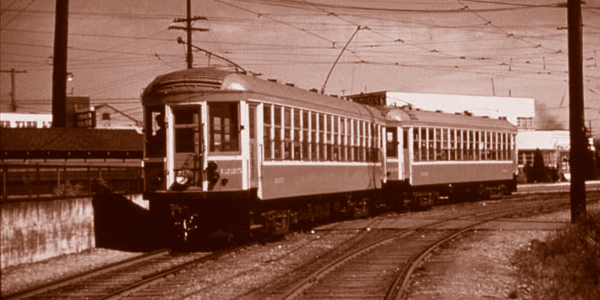
CAR 1225/1207
BCER 1225 and 1220 on a daily run
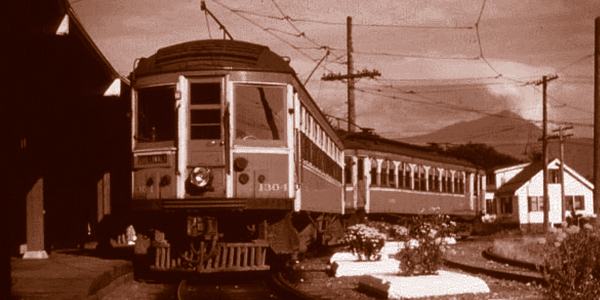
CAR 1304
BCER 1304 arriving at Chilliwack terminus

A SNAPSHOT IN TIME
Passengers Arriving for next train
Based on an idea by, and personal funding of $25,000 from Mr. Jim Wallace, a commissioner with the Surrey Heritage Advisory Commission (SHAC), a feasibility study was undertaken between 1996 and 2000 to ascertain the feasibility of reactivating the old B C Electric Railway (BCER) line in the Fraser Valley for passenger service.
Based on that study a recommendation was made to Surrey City Mayor and Council at least two original interurbans could possibly be repatriated from their US museum owners and that reactivating the interurban line through Surrey was feasible. Surrey Council requested that a not-for-profit group be formed to undertake the repatriation, rehabilitation and return of original BCER Interurban cars to the original Fraser Valley line for use in a heritage tourism initiative.
In 2001 the Fraser Valley Heritage Railway Society (FVHRS) was formed to acquire, restore and operate the remaining BCER Interurban cars. The original Fraser Valley rail line still exists in the valley from New Westminster as far East as Chilliwack. Some adjustments to the tracks have been made in the past 50 years, but most of the original track is still there. The Fraser Valley interurban line last carried passengers in 1955, a special trip from Chilliwack for Miss J. E. Fowlie and her grade 3 class from Yarrow. The original BCER Fraser Valley line remains a forgotten jewel in the valley.
CHARITABLE STATUS
We operate as a non-profit charitable organization in Surrey, BC.
OUR MISSION
To restore and to operate heritage interurban cars on the original BC Electric Railway Route through Surrey and the Fraser Valley to link heritage tourism destinations.
The BCER was incorporated on April 3, 1897, under English laws, with head office at Threadneedle Street in London, England, according to BCER Historian Henry W. Ewert
It was not just an amalgamation of existing street car lines, but of an interurban line from Vancouver to New Westminster developed by the Westminster & Vancouver Tramway Co. on October 8, 1891, Ewert shows on pages 20-21 of his excellent book, “The Story of the British Columbia Electric Railway Company Limited” (Whitecap Books, July, 1986) Although the idea of servicing the Fraser Valley had been considered in the 1890s, it was not until the Fraser River Bridge was built and in operation until June 1904, that the BCER could attend to developing its Fraser Valley Line.
The Fraser Valley Line was completed in 1910 and that passenger service was inaugurated on October 3, 1910
BCER 1225 worked in Vancouver, Steveston and Burnaby from 1913 until February 28, 1958, and now lives at our Cloverdale Station. Come back soon for our Car 1225 history page with more information and photos of the restoration process.
“BCER 1225 left Perris at noon today. We suffered through a small Tornado yesterday, which caused havoc here. Tore the roof off one building that housed all OREM old blueprints and other paper goods. This might have been OK but the rains were something I have never experienced. Then the hail. At the end trees were down and major flooding. What about 1225: Stood up well got a good soaking. Length of time we sat out of harm’s way was about 2 hours. Amazingly, after it was all over the sun was back out and the temp back to 104 degrees.”
On April 25, 2009 BCER 1304 was welcomed back to Canada at our Sullivan Station car barn. For the story of this car, including a devastating fire and brush with royalty read further.
Citations and page references, unless otherwise noted, are from The Story of the B.C. Electric Railway Company, by Henry Ewert, Whitecap Books 1986. Used with kind permission of the author.
Originally built at the New Westminster shops in June 1911, as part of the three car Fraser Valley interurban work order for 1303, 1304 & 1305, patterned after the existing set: 1300-1302. They were joined in June by three G.C. Kuhlman Car Company cars that became 1306 – 1308.
“How the B.C. Electric prepared for royalty! For the visit of their Royal Highnesses, the Duke and Duchess of Connaught and their daughter, Princess Patricia (the Duke was then Canada’s Governor-General), the company decorated its head office building with a blaze of lights and royal 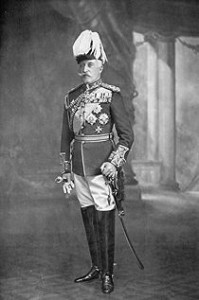 motifs. (This was their second visit. What changes they must have observed since their first trip in 1890.) But the company outdid even itself. Selecting one of its New Westminster-built Fraser Valley branch interurban cars, the fifteen-month old 1304, the company sent it back into the car shops for an extraordinary transformation, and when it reappeared, it had been freshly painted; it also bore the royal coat of arms, twice on each side, the name “Connaught” and the company’s name in full, both delicately, but boldly, lettered in gold on each side.”
motifs. (This was their second visit. What changes they must have observed since their first trip in 1890.) But the company outdid even itself. Selecting one of its New Westminster-built Fraser Valley branch interurban cars, the fifteen-month old 1304, the company sent it back into the car shops for an extraordinary transformation, and when it reappeared, it had been freshly painted; it also bore the royal coat of arms, twice on each side, the name “Connaught” and the company’s name in full, both delicately, but boldly, lettered in gold on each side.”
“Its interior, with seats and partitions removed, resembled a well-appointed living room, with carpet, curtains, and upholstered chairs, mostly in cream and green. The orange glass of the upper arches of the windows was masked by the curtains, and red light bulbs were strategically installed elsewhere to resemble an open fire in a grate.”
(P 105-106)
“… Car 1304 soon reverted to normal life and service, its transformation having been quite magical and certainly short-lived. (It is the only Fraser Valley interurban still in existence today, at Fraser Valley Heritage Railway in Cloverdale, BC.
(pp 107)
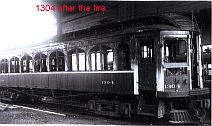
BCER 1304 on Sept 16, 1945 – just after the fire
Photo by Ken Hodgson, collection of Bob Webster
(September 16, 1945) “…interurban 1304, the former ‘Connaught car,’ caught fire near Cloverdale while making its way west from Chilliwack, the last car of an empty three-car train. Only a virtually destroyed shell was left by the time the train’s crew realized what was happening behind them and a brave, though futile, attempt was made to extinguish the blaze. It was not to languish long as a bizarre floor on wheels outside the company’s Kitsilano complex; since passenger vehicles were still in great demand, the shops, busy with street car refurbishing and rebuilding, got to work, constructing a beautiful, new interurban car, its exterior patterned after the 1309 – 1311 series. Dark leather, foam-filled, flip-over seats were installed; walls of dark varnished mahogany and a cream painted ceiling clinched its unique handsomeness. For the second time in its career, car 1304 was an attention-getter. Its return to action on December 29 was an unqualified triumph, denizens of Carrall Street viewing with some amazement and pleasure a prime example of the car builders’ art at its best, something the company’s shops might have turned out in 1910, and could still do thirty-five years later later. ‘Built at Kits. Shops Jan. 1946’ proudly lettered over a vestibule door, 1304 quite possibly was the last wooden interurban car built in North America.”
BCER 1304 after the fire
BCER 1304 rebuilt after the fire
“… much special activity was occurring, adroitly stage-managed by interurban superintendent Mouat and chief dispatcher D. W. Stearman.” Car 1311 left from Chilliwack in the morning heading west. Cars 1310 and 1307 departed New Westminster with a full load of officials, seniors and retired Chilliwack line employees. These trains met at Langley Prairie at noon, touched cowcatchers and then the passenger service on the Fraser Valley line ended. At the conclusion of these ceremonies the three cars of the two trains were joined together and deadheaded to the New Westminster yards; all officials and guests completed their journeys on the buses.”
“Within a week … with a view to the possibility of their giving longer-term service on the Central Park line, should that be necessary, the two ‘newest’ interurban cars, 1304 and 1321, had their toilets removed in favour of seating space.”
(pp 267)
At 1:30 a.m. on July 16, 1954 the last interurban train operated from the Carrall Street Station on the Central Park line. Reaching Park Avenue at 2:10 a.m. it then proceeded to the New Westminster barn. Closing down sixty-three years of passenger service on the Central Park line was an interurban train consisting of cars 1316 and 1304. Car 1304 was saved from the scrap yard being declared the system’s official standby coach. This decision enabled the car to survive until to today.
(ref pp 278 – 249)
“Interurban car 1304 had not been out on the Chilliwack line for almost five years, but when Yarrow teacher Miss J.E. Fowlie wondered in a letter to president Grauer if her grade three students might not have a train ride to round off a study unit on transportation, it was as good as done. One of the diesels hauling a freight train brought 1304 to Chilliwack, where the thirty-eight students, with their teacher, boarded it for a forty-five minute ride to Yarrow. After the students had inspected the train’s caboose, the freight train continued on its way to New Westminster, leaving behind a class of bubbly, still side-eyed children.”
A reunion was held in the summer of 2015 of the riders of this last run. See our blog for more on this.
Car 1304 left Canada in 1955 and moved to Glenwood, Oregon to reside at the “Trolley Park” of the Oregon Electric Railway Historical Society. It was returned to Canada, to the FVHRS in 2009.
Rehabilitation
Rehabilitation of 1304 is now well underway in the car barn. The target date for completing the work and have 1304 operational (subject to funding) is 2017. It is worth adding the Rehabilitation of the body of 1304 is well advanced, fundraising to rehabilitate the seats was a success and this work is well under way. The traction motors will be sent off for refurbishment shortly. Work is underway to rehabilitate the trucks. Anyone interested in assisting with the rehabilitation of 1304 can contact us at info@fvhrs.org.
1304 being lifted from the barn at Sullivan in preparation for it’s journey to Cloverdale August 2012.

1304 lifted up for it’s trucks to be removed Oct 2013
Trucks being removed.
In 1912 BCER 961 was built by the American Locomotive and General Electric for the Oregon Electric as #21. It served as part of their fleet until 1946 when it was bought by the BCER brought to the lower mainland and renamed as 961.
Painted in a BCER maroon red the electric locomotive served the company until BCE was taken over by the BC Government in 1961. As part of the now BC Hydro properties the freight motor was painted yellow with a distinctive red arrow on its sides.
In 1980 the 961 was sold to Edmonton Transit and moved to Alberta to help in the expansion of that system’s transit operations. It was painted in Edmonton Transit colours, white and blue. and renamed as 2001.
Once the transit expansion was finished the locomotive was turned over to the Edmonton Radial Railway Society (ERRS) and was basically stored under a tarp for many years at Fort Edmonton.
In 2012 ERRS contacted the FVHRS and asked if the FVHRS would like the locomotive to come back to BC. The board of directors decided it would be a nice addition to our collection and it did fit within the society’s collection policy.
In May 2014 trucks appeared in our Cloverdale compound with the freight motor and with the help of a 200T crane it was placed on tracks next to the car barn.
The locomotive, for the foreseeable future, will remain a static display and over the next few months it will be moved indoors and, hopefully repainted back to the original BCER maroon colours.
Some Specs: weight 128 040 lbs; 38 feet in length and it has four 190 hp electric motors.
FVHRS acquired its speeder from PNR Railworks who no longer used it, approximately 15 years ago. They kindly donated it to the Society.
So what is a speeder anyway? Speeders are actually called Track Inspection Vehicles (“speeder” is the slang name, and much shorter). Speeders were light-weight vehicles, human or gas powered, and used on all railroads to patrol sections of track to ensure the track was was safe and clear of obstructions for following trains. Before radio contact, they had to be able to get out of the way if a train appeared, and most were light enough that the crew could lift it off the track. Now with radio communications, getting in the way is rarely a problem and the Speeder has been replaced by a work truck like an F350 outfitted with rail wheels, which will allow them to travel on the track powered by the truck’s wheels. Trucks are much more efficient but the Speeders of old were much more romantic!
SPEEDER QUICK FACTS

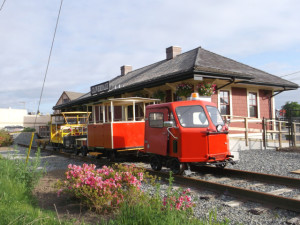
Railroads in North America often made use of a three-wheeled handcar designed to be operated by a single person. It was mostly used for maintenance of rails but it was also used for passenger service in some cases. A typical design consists of an arm, called the walking beam, that pivots, seesaw-like, on a base, which the passengers alternately push down and pull up to move the car. This came to be known as a ‘railway velocipede’.
See what FVHRS Director Harry Taylor, the person who rehabilitated the velocipede has to say about it:
I have found that it was built by the Sheffield Car Co. in Three Rivers, Michigan. I don’t know when this Velocipede was built but I do know that it is a Type 1 and it is shown in a Sheffield catalogue dated 1894. I did find a picture of a Velocipede Type 1 being used on the CPR main line taken about 1890. I don’t know how much one cost new back in the day but I do know you could get the optional seat cushion for $1.50. I did find that you could buy a new Sheffield Standard Section Hand Car for $25.00 in 1922.
All the wood parts were replaced with local Broad Leaf Maple and stained and finished with a clear finish. All the bolts were replaced and painted black. All the other steel was de-rusted and painted black. We only had to make a new gear for the back wheel as it was too far gone to save. The outrigger wheel was replaced with a speeder wheel because it didn’t have the original one. We replaced all the bearings because they were worn out or missing.
I starting doing research on Velocipedes shorting after Vince Holmes talked to me about it, mainly because I had very little knowledge about them. I started restoring the Velocipede about a week after Thanksgiving 2014. Some of the work was done at the Cloverdale barn but the main construction was done in my basement at home, that way I could work on it at all times of the day. The final assembly and adjustments were done at the Cloverdale barn as I don’t have train rails running through my basement!
I didn’t keep track of my time but thinking back I’m sure I spent more than 500 hours on the project and it was ready for opening day May 9, 2015.